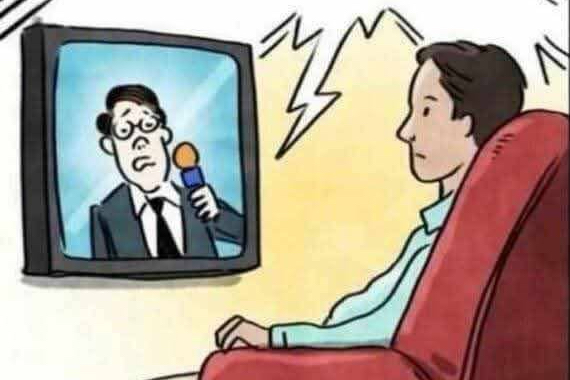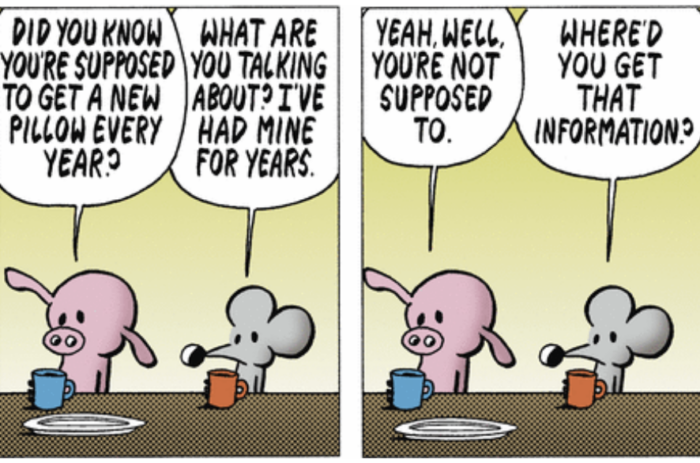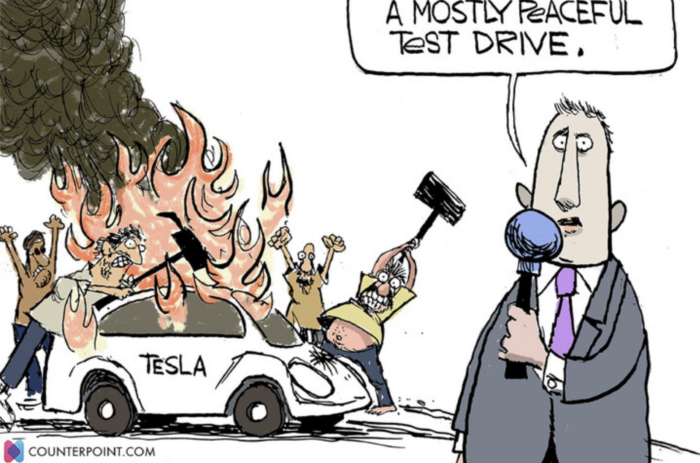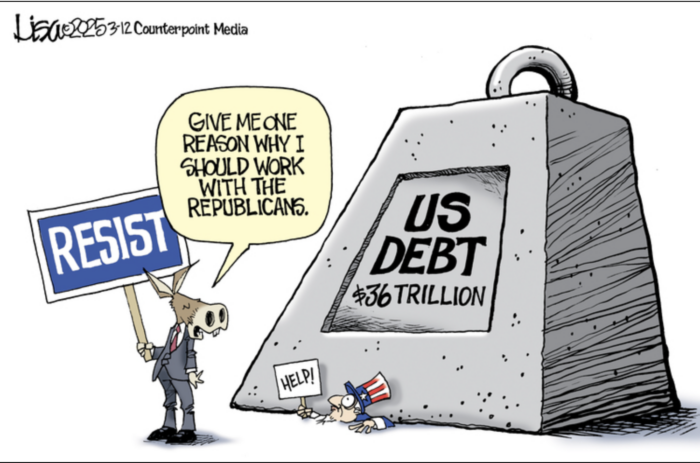print Print Cartoons
Questions
1. Editorial cartoonists often uses humor to illustrate a news item – in this case President Trump’s executive actions/orders in his first week in office. Read the three cartoons. Which comic device do the first two cartoonists (Varvel and Ariail) both use? Explain your answer.
a) caricature
b) symbol
c) understatement
d) hyperbole
e) parody
2. Tone is the attitude a cartoonist takes towards a subject. Which pair of words best describes the tone of the third cartoon?
a) indifferent/apathetic
b) disgusted/cynical
c) sarcastic/humorous
d) angry/critical
e) grateful/appreciative
3. What is the point of Ramirez’s cartoon?
4. Do you agree with the Ramirez’s assertion? Explain your answer.
Scroll down to the bottom of the page for the answers.
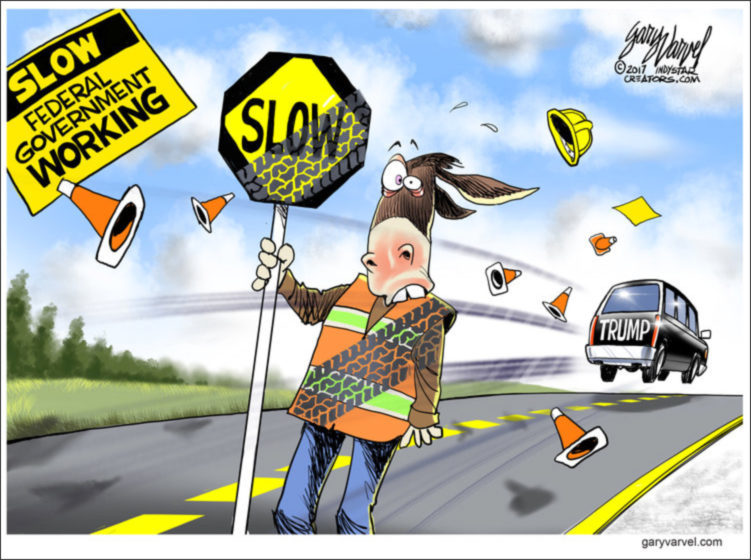
Cartoon by Gary Varvel
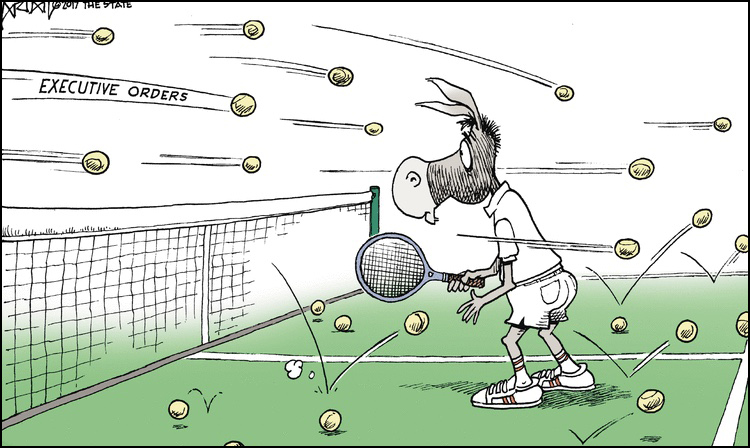
Cartoon by Robert Ariail
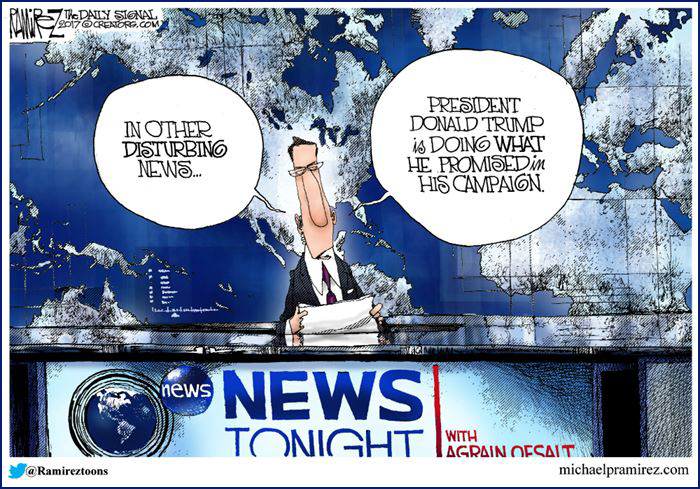
Cartoon by Michael Ramirez
Answers
1. b) symbol: An object, character, figure, place, or color used to represent an abstract idea or concept.
The donkey in both represents the Democratic party.
The cartoonist did not use:
a) caricature: A description or characterization that exaggerates or distorts a character’s prominent features, usually for purposes of mockery. For example, a cartoon of a gaunt Abraham Lincoln with a giant top hat, a very scraggly beard, and sunken eyes could be considered a caricature.
c) understatement: A figure of speech (or illustration) in which statements (meanings) are purposely understated. It may be used to indicate the speaker’s nonchalance (or obliviousness) regarding an often important or otherwise remarkable situation. It often results in irony where, for instance, the speaker’s response to an event does not match how the viewer expects the speaker to react.
d) hyperbole: An extreme magnification or exaggeration of actuality. It blows something completely out of proportion for a distorted effect. The purpose of hyperbole is to create a larger-than-life effect and overly stress a specific point. (Used as a figure of speech in which exaggeration is used for emphasis or effect, as in “I could sleep for a year” or “This book weighs a ton”)
e) parody – known by also as a spin-off or spoof, a parody is an imitation of another’s work, usually in a humorous way to poke fun at the original work. Usually, for a better effect, a parody makes fun of a famous or well-known piece of work, so the audience has a better chance of recognizing the original.
2. c) sarcastic/humorous
3. Ramirez’s point is that instead of reporting uncritically or objectively — or optimistically that President Trump is keeping the promises he made to voters when campaigning, the media is upset that he is carrying out his promises to the voters who elected him.
4. Opinion question. Answers vary.
